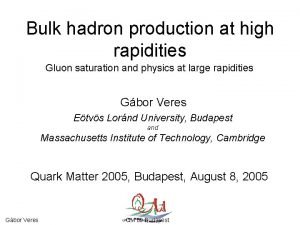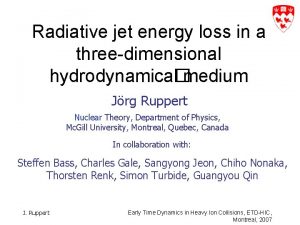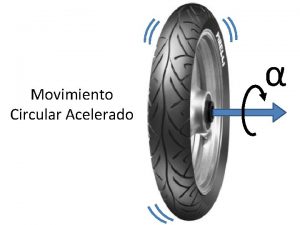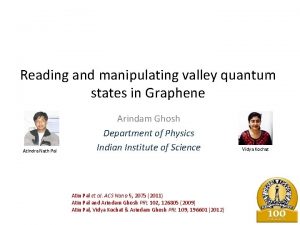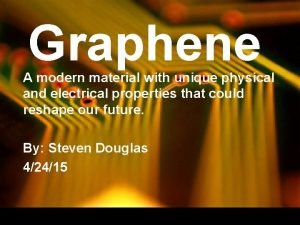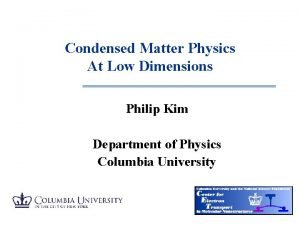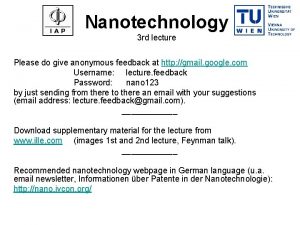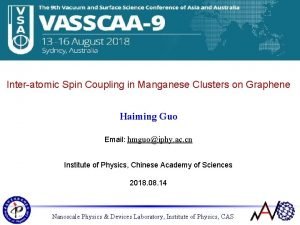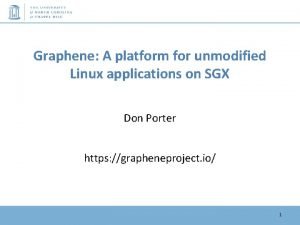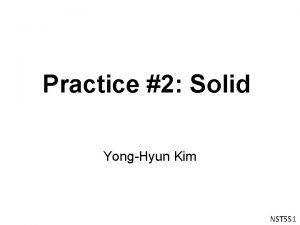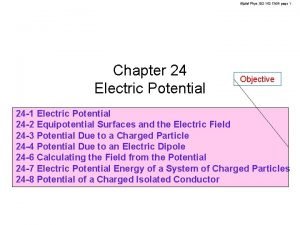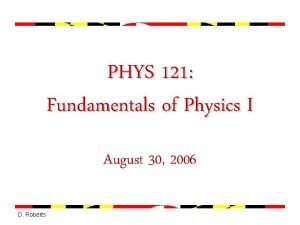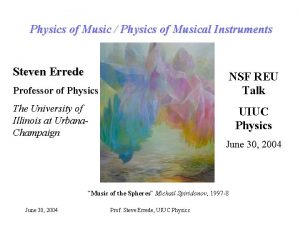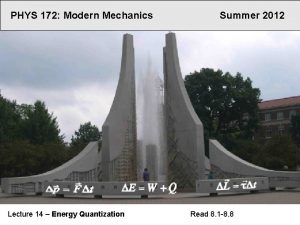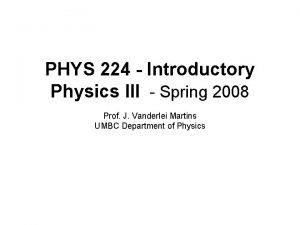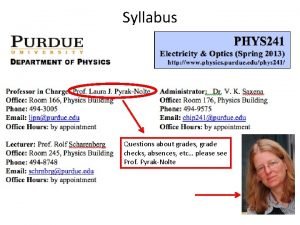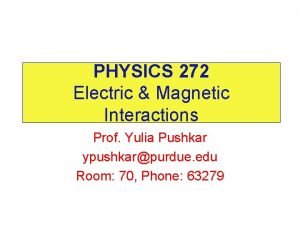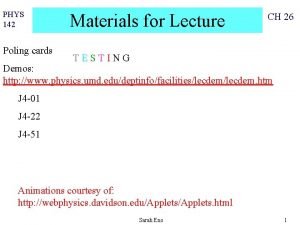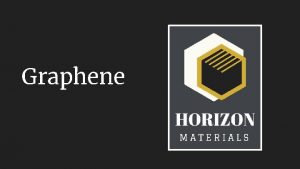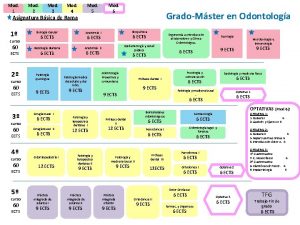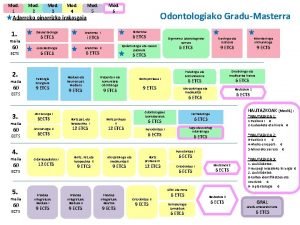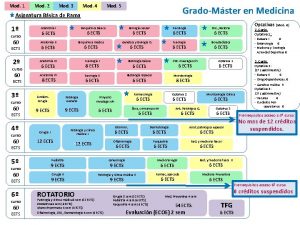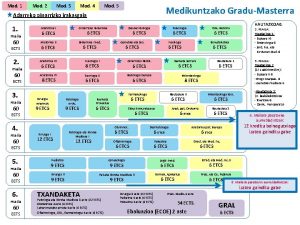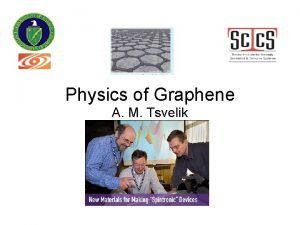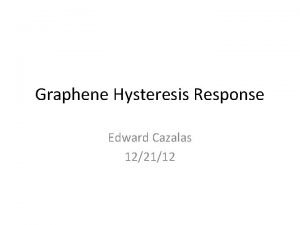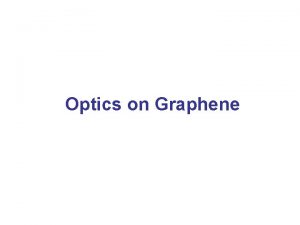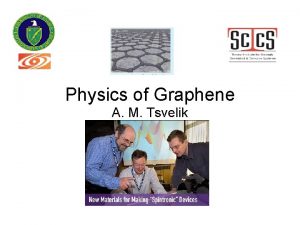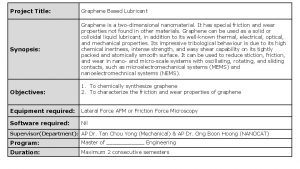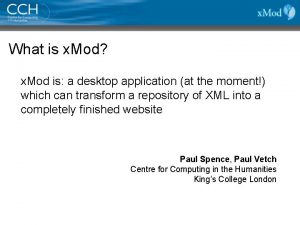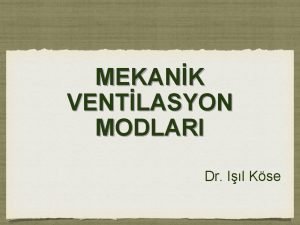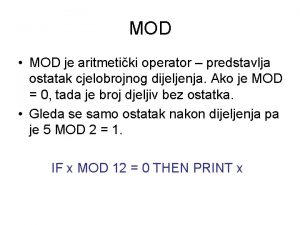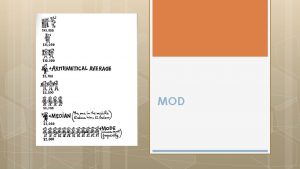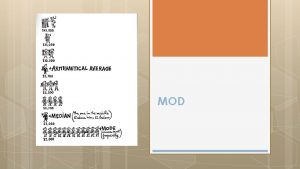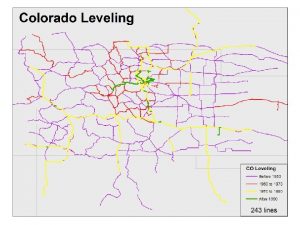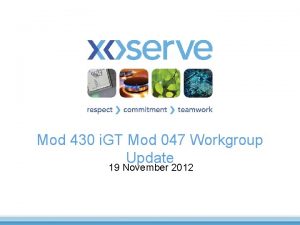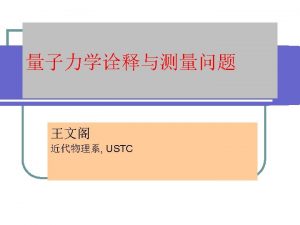Graphene CastroNeto et al Rev Mod Phys 81






























- Slides: 30

Graphene Castro-Neto, et al. Rev. Mod. Phys. 81 (2009) 109 Single atomic layer of graphite 1

I. Graphene Electronic Properties (isolated graphene sheets) II. Graphene Formation—Growth on Si. C III. Graphene Growth on BN, Co 3 O 4, etc. 2

Castro-Neto, et al. Rev. Mod. Phys. 81 (2009) 109 3

Graphene’s band structure yields unusual properties Castro Neto EF The velocity of an electron at the Fermi level (v. F) Is inversely related to meff Effective mass (m*) ~ [d. E 2/dk 2]-1 Most semiconductors, 0. 1 m 0 < m* < 1 me Graphene, m* < 0. 01 m 0 (depending on number of carriers) Therefore, expect VERY high mobility in graphene Both holes and electrons can be carriers 4

Effective mass for graphene does get very small as n~ 1012 Castro-Neto, et al. Rev. Mod. Phys. 81 (2009) 109 5

6

The Big Problem with graphene: an imagined conversation: A. OK: Graphene is great, lots of interesting properties for devices! B. How do you make a device? A. You need a sheet of graphene! B. OK, how do you get a sheet of graphene? A. HOPG, scotch tape, and tweezers! B. !@#$%% 7

How do you “grow” graphene? You can evaporate Si from Si. C(0001) (either face) Popularized by the de Heer group at Georgia Tech. 8

Can grow multilayer films of graphene on Si. C (azimuthally rotated from each other—electronically decoupled!) Anneal at 1350 C Interfacial layer (anneal at 1150 C) Si. C Auger, graphene growth on Si. C, de. Heer et al. 9

Inverse photoemission and LEED (Forbeaux, et al, PRB, 58 (1998) 16396) Growth of graphite on Si. C(0001) π* feature 10

Angle resolved UPS (Emtsev, et al, PRB 77(2008) 155303) shows transition to graphene band structure 11

Adjacent layers on graphene /Si. C are decoupled from each other, Due to azimuthal rotation 12

Graphene on Si. C(0001) Not uniform on an atomic level, different regions due to different #s of layers, orientations M B 13

Graphene/Si. C photoemission: varying hv can vary the sampling depth (Emtsev, et al, PRB 77 (2008) 155303 14

The covalently bound stretched graphene (CSG model) Emtsev, et al. , PRB 77 (2008) 155303 15

Pertinent Questions: How do Adjacent Graphene Sheets couple electronically? Single layer Graphene (good) Many layer Graphite (meh!? ) When/how this transition occurs is very pertinent to devices Answer: On Si. C, Adjacent Sheets apparently not coupled due to azimuthal rotation 16

Core (left) and valence band (right) PES graphene growth on Si. C (Emtsev, et al) Explain the implications of this for graphene coupling between layers 17

Motivation: Direct Growth on Dielectric Substrates: Toward Industrially Practical, Scalable Graphene—Based Devices Graphene Growth: Conventional Approaches CVD graphene monolayer transfer Si. O 2 Metal or HOPG Si. C(0001) Our Focus: Direct CVD, PVD or MBE On Dielectrics Result: graphene monolayer, interfacial inhomogeneities Si Si evaporation > 1500 K Si. C(0001) Result: graphene monolayer or multilayer on Si. C(0001) FET: Band gap Charge-based devices n Spintronics graphene Mg. O(111) Si(100) Co 3 O 4(111) graphene Coherent-Spin FET: Top Gate 00)- r Si(1 o ) 1 1 1 ( o C gate Multi-functional, nonvolatile devices 18

Direct Growth of Graphene on Dielectric Substrates: Summary 19

Gate valves BCl 3 NH 3 Butterfly valve Turbo MBE Intro/ transfer deposition Sample heating to 1000 K @ 1 Torr Auger Graphene/Co 3 O 4 STM Graphene/Mg. O(111) UHV chamber, 10 -11 Torr LEED I(V) ALD or PVD Free radical source Hemispheri cal analyzer (XPS) LEED Graphene growth & characterization without ambient exposure Sample Intro chamber P = 103 Sample processing P = 10 -9 Torr – 10 10 -3 Torr UHV Analysis -6 Torr Chamber 20 P ~ 5 x 10 -10 Torr

Graphene/BN/Ru(0001): Bjelkevig, et al LEED shows BN and Graphene NOT azimuthally rotated! Orbital hybridization with Ru 3 d! 21

Gr/BN/Ru(0001): Inverse photoemission. π* not observed! BN layer does NOT screen graphene from orbital hybridization and charge transfer from Ru! 22

Graphene on Co 3 O 4(111): Molecular Beam Epitaxy Substrate Preparation Evaporator P~ 10 -8 Torr 750 K Co(111)+ dissolved O Sapphire(0001) 1000 K/UHV ~3 ML Co 3 O 4(111) Co(111) O segregation Sapphire(0001) 23

Graphene growth on Co 3 O 4(111)/Co(0001) MBE (graphite source)@1000 K: Layer-by-layer growth 1 st ML 3 ML 2 nd ML 0. 4 ML M. Zhou, et al. , J. Phys. : Cond. Matt. 24 (2012) 072201 24

LEED: (a) 65 e. V Oxide/Carbon Interface is incommensurate: Different than graphene on Si. C or BN! Graphene Domain Sized (from FWHM) (c) 65 e. V ~1800 Å (comp. to HOPG) Oxide spots attenuated with increasing Carbon coverage (b) 0. 4 ML (d) graphene Co 3 O 4(111) 65 e. V beam energy 3 ML 2. 5 Å 2. 8 Å M. Zhou, et al. , J. Phys. : Cond. Matt. 24 (2012) 072201 2. 8 Å O-O surface repeat distance on Co 3 O 4(111) W. Meyer, et al. JPCM 20 (2008) 265011 25

XPS: C(1 s) Shows π system: Binding Energy indicates graphene oxide charge transfer XPS (separate chamber): Al Kα source π→π* 284. 9(± 0. 1) e. V binding energy: Interfacial polarization/charge transfer to oxide No C-O bond formation M. Zhou, et al. , J. Phys. : Cond. 26 Matt. 24 (2012) 072201

Directly grown graphene/metals and dielectrics: Inverse photoemission and charge transfer Ef n-type charge transfer p-type Position of * (relative to EF) indicates direction of interfacial charge transfer (Kong, et al. , J. Phys. Chem. C. 114 (2010) 21618 Forbeaux, et al. Multilayers 27

Generalization, Directly Grown Graphene and Charge Transfer: Oxides (p-type) vs. Metals (n-type) e- graphene Transition metals (Ru, Ni, Cu, Ir…) e- graphene Oxides, Si. C EF n-type; metal to graphene charge transfer p-type; graphene to substrate charge transfer EF 28

Suspended graphene Graphene (few layer) on Co 3 O 4: Much more conductive than suspeneded graphene Why? ? • Significant doping? ? ? • High mobility (How high)? ? ? 29

Conclusion: Graphene: Large area growth on practical substrates critical for device development. Interactions with substrates and (maybe) other graphene layers are critical to device properties 30
 Isolde martinson
Isolde martinson Phys. rev. c
Phys. rev. c Phys. rev. c
Phys. rev. c Formula velocidad angular
Formula velocidad angular Grapheneq
Grapheneq Is graphene a modern material
Is graphene a modern material Philip kim graphene
Philip kim graphene Graphene sp2 hybridization
Graphene sp2 hybridization Aixtron graphene
Aixtron graphene Graphene
Graphene Electrostatic graphene loudspeaker
Electrostatic graphene loudspeaker Graphene linux
Graphene linux Solid
Solid Aljalal phys 102
Aljalal phys 102 Phys 214
Phys 214 Uiuc phys 101
Uiuc phys 101 Phys 121 umd
Phys 121 umd Phys 398 uiuc
Phys 398 uiuc Phys courses ucsd
Phys courses ucsd Phys 172
Phys 172 Phys 224
Phys 224 Purdue phys 241
Purdue phys 241 Mastering physics login
Mastering physics login Single slit envelope
Single slit envelope Aljalal phys 102
Aljalal phys 102 Phys 214
Phys 214 Phys 225
Phys 225 Si units for coulomb
Si units for coulomb Calculating percent difference
Calculating percent difference Phys 102 uiuc
Phys 102 uiuc Phys 142
Phys 142

